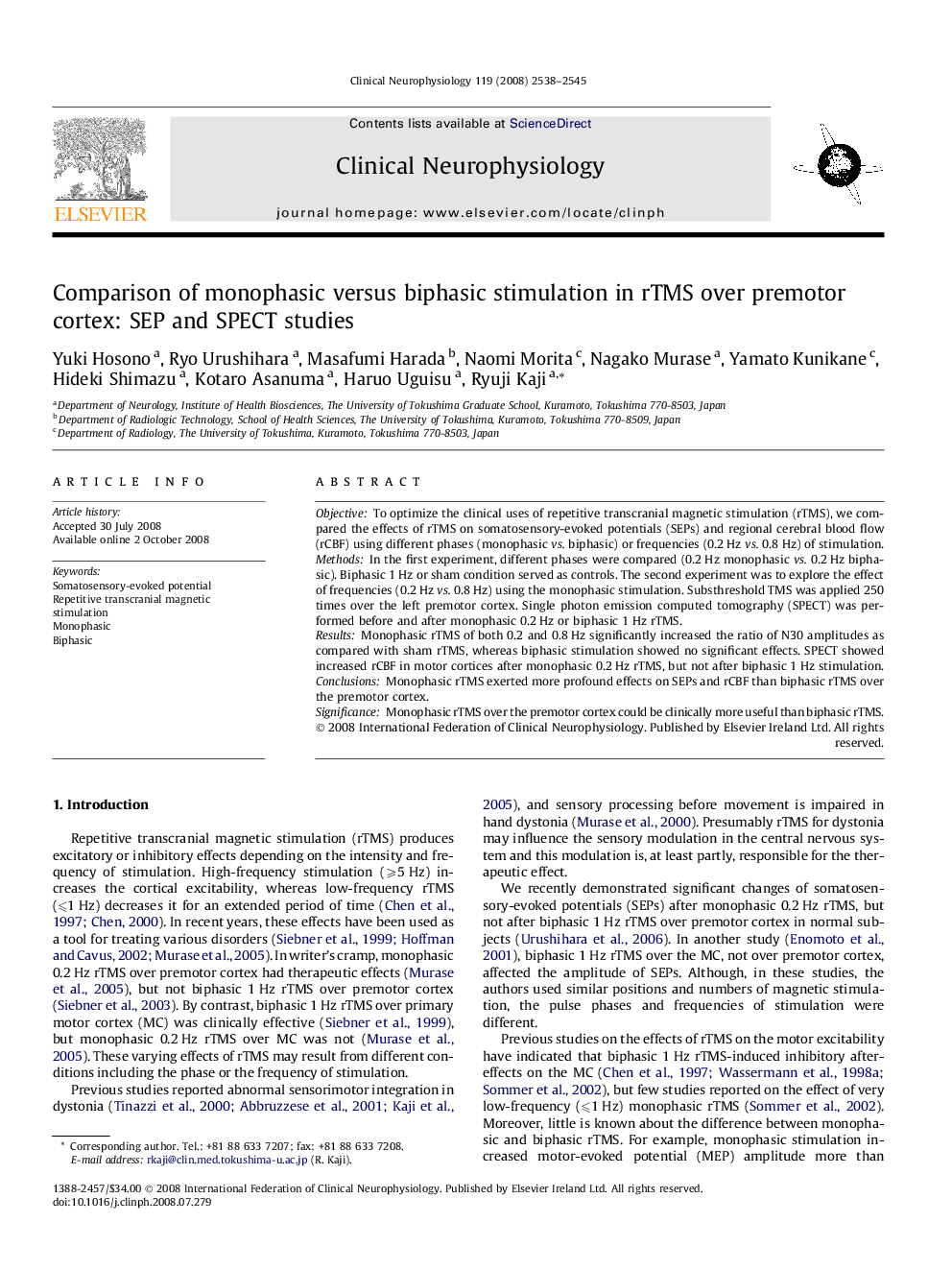| Article ID | Journal | Published Year | Pages | File Type |
|---|---|---|---|---|
| 3047014 | Clinical Neurophysiology | 2008 | 8 Pages |
ObjectiveTo optimize the clinical uses of repetitive transcranial magnetic stimulation (rTMS), we compared the effects of rTMS on somatosensory-evoked potentials (SEPs) and regional cerebral blood flow (rCBF) using different phases (monophasic vs. biphasic) or frequencies (0.2 Hz vs. 0.8 Hz) of stimulation.MethodsIn the first experiment, different phases were compared (0.2 Hz monophasic vs. 0.2 Hz biphasic). Biphasic 1 Hz or sham condition served as controls. The second experiment was to explore the effect of frequencies (0.2 Hz vs. 0.8 Hz) using the monophasic stimulation. Substhreshold TMS was applied 250 times over the left premotor cortex. Single photon emission computed tomography (SPECT) was performed before and after monophasic 0.2 Hz or biphasic 1 Hz rTMS.ResultsMonophasic rTMS of both 0.2 and 0.8 Hz significantly increased the ratio of N30 amplitudes as compared with sham rTMS, whereas biphasic stimulation showed no significant effects. SPECT showed increased rCBF in motor cortices after monophasic 0.2 Hz rTMS, but not after biphasic 1 Hz stimulation.ConclusionsMonophasic rTMS exerted more profound effects on SEPs and rCBF than biphasic rTMS over the premotor cortex.SignificanceMonophasic rTMS over the premotor cortex could be clinically more useful than biphasic rTMS.
